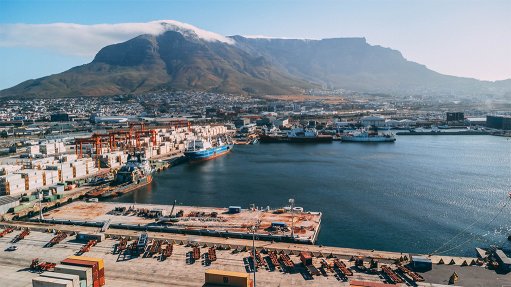The Golden Flywheel
I was talking with a Zimbabwean recently about his country and he said, “Very bad.” And then he added: “Your turn next”, referring to South Africa.
Some think that, back in the days of apartheid, “things were better”. So I thought I would write about how things were, in fact, back in the days of apartheid, as I saw in the mining sector. During apartheid, people would predict the end of South Africa by a huge revolution. I would say it was not going to happen, because, I said, of the ‘golden flywheel’.
The ‘golden flywheel’ (my term) was that the South African economy would continue above anything else, owing to the fact that, at the time, there were about 114 gold mines, all operating at a profit. I worked for a period on two of the gold mines, West Driefontein and Libanon.
The reasons the mines made a big profit were the availability of cheap labour and cheap electricity. Since the electricity was generated using coal, it was cheap, owing to the cheap labour. Thus, the whole thing behind the ‘golden flywheel’ was cheap labour, as in black men of varying ages.
Another reason that the gold mines were brilliant investments was the fact that safety was not too much of an issue. One should remember that the people in management at the time had the Second World War as a clear memory of not more than 25 years earlier (similar to our memories of the first free election) and, thus, injury and death were not regarded as being as serious as they are today. It happened.
So, since the vast number of people who got injured or died were black men of varying ages, not a great fuss was made – it was all a bit like Greek democracy, where all were equal, apart from the slaves. Under these circumstances, all the mining houses had to do was to be as safe as the budget would allow and otherwise disguise the figures.
West Driefontein and Libanon aimed to get one-million fatality-free shifts, which sounded as if they aimed to have no fatali- ties for some extended period. However, they regarded a shift as one person going underground (or working on surface) for a day and, since there were about 10 000 underground mineworkers (on West Driefontein), the target was not something that would happen over a period of a year or two; the aim was, in fact, to work 100 days (three months, in effect) without a fatality – a short period indeed.
This gives you an idea of how unsafe it was. And it was unsafe for everybody. On the Libanon mine, I worked on the construction of the Blair double-drum winder underground at the subvertical shaft. To get there from the surface shaft, we had a choice: walk in on 17 Level or walk in on 18 Level. The disadvantage of 18 Level was that, to get to the winding chamber, you had to walk up 325 steps. The advantage was that there were very few rock falls on 18 Level and daily falls on 17 Level. After two narrow misses, I chose the steps.
But the mine management knew and did nothing. There were other accidents: an onsetter fell down the shaft with a loco and some ore trucks when the loco brakes failed. The trucks took out two midshaft pumpstation attendants on the way down. The ‘start’ button broke off a scraper winch control box. The worker used a bit of wood to push in the contactor. He lost the wood and then tried to push it in with a nail and was electrocuted. And so many others: workers dying in rockfalls, fires, being gassed . . .
The issue was that, if you stopped the mine following every accident, the mine would make no money.
This, then, was the ‘golden flywheel’ – a great investment based on labour exploitation and risk. To hope for these times to return or to reminisce that they were good is to effectively paint with a glowing shadow an industry which relied on suppressed masses working unsafely to make money for investors. It is just not right.
Comments
Press Office
Announcements
What's On
Subscribe to improve your user experience...
Option 1 (equivalent of R125 a month):
Receive a weekly copy of Creamer Media's Engineering News & Mining Weekly magazine
(print copy for those in South Africa and e-magazine for those outside of South Africa)
Receive daily email newsletters
Access to full search results
Access archive of magazine back copies
Access to Projects in Progress
Access to ONE Research Report of your choice in PDF format
Option 2 (equivalent of R375 a month):
All benefits from Option 1
PLUS
Access to Creamer Media's Research Channel Africa for ALL Research Reports, in PDF format, on various industrial and mining sectors
including Electricity; Water; Energy Transition; Hydrogen; Roads, Rail and Ports; Coal; Gold; Platinum; Battery Metals; etc.
Already a subscriber?
Forgotten your password?
Receive weekly copy of Creamer Media's Engineering News & Mining Weekly magazine (print copy for those in South Africa and e-magazine for those outside of South Africa)
➕
Recieve daily email newsletters
➕
Access to full search results
➕
Access archive of magazine back copies
➕
Access to Projects in Progress
➕
Access to ONE Research Report of your choice in PDF format
RESEARCH CHANNEL AFRICA
R4500 (equivalent of R375 a month)
SUBSCRIBEAll benefits from Option 1
➕
Access to Creamer Media's Research Channel Africa for ALL Research Reports on various industrial and mining sectors, in PDF format, including on:
Electricity
➕
Water
➕
Energy Transition
➕
Hydrogen
➕
Roads, Rail and Ports
➕
Coal
➕
Gold
➕
Platinum
➕
Battery Metals
➕
etc.
Receive all benefits from Option 1 or Option 2 delivered to numerous people at your company
➕
Multiple User names and Passwords for simultaneous log-ins
➕
Intranet integration access to all in your organisation


















